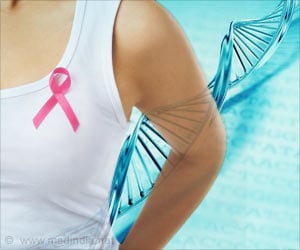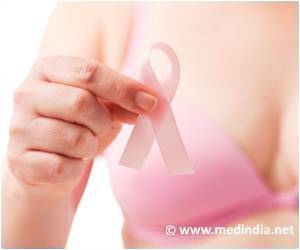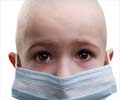- Female childhood cancer survivors are at a greater risk of developing breast cancer later in life
- Genetic profiling is a technique that can help predict the degree of risk for developing breast cancer in young women who survived cancer in their childhood
- Genetic profiling can predict breast cancer even before it develops, thereby providing valuable time to institute suitable preventive strategies
Read More..
Background of the Study
Female childhood cancer survivors have been found to be at a higher risk of developing breast cancer than the general population. This may occur due to radiotherapy of the chest or by the use of chemotherapeutic drugs at high doses. It has been found that children who have survived cancer are particularly susceptible to breast cancer, if they carry certain mutations in their genes. These are the so-called pathogenic or likely pathogenic (P/LP) mutations, which include mutations in the BRCA1 gene as well as other genes.The present study investigated the susceptibility to breast cancer by looking at the bigger picture of the pathogenesis of breast cancer by genetic profiling. These include polygenic determinants, which are common genetic mutations having a small impact or monogenic determinants such as P/LP mutations that have a greater impact on breast cancer development.
Some of these P/LP mutations include those in the following genes that predispose women to breast cancer: BRCA1, BRCA2, TP53, PTEN, CDH1, STK11, NF1, PALB2, ATM, CHEK2, and NBN.
Study Procedure
St. Jude Lifetime Cohort Study (SJLIFE) database was accessed to analyze full genome sequencing data of 1,133 female cancer survivors. All the cancer survivors were of European ancestry. Of these, 47 developed breast cancer.There were 170 common risk alleles for breast cancer in the genomes of each survivor. The weighted sum of these 170 risk alleles were calculated and used for constructing a polygenic risk score (PRS) for each cancer survivor. P/LP mutations were also examined in 11 breast cancer genes that predispose an individual to the disease. Subsequently, the relative rates of incidence of breast cancer were estimated.
Study Findings
Multivariate analysis revealed that survivors who belonged to the highest PRS quintile were 2.7 times more prone to developing breast cancer than those belonging to the lowest quintile.Cancer survivors who received chest radiotherapy were at an even higher risk of developing breast cancer. For example, those in the highest PRS quintile who received chest radiotherapy had three times the risk of developing breast cancer than those in the lowest quintile who had undergone similar radiotherapy.
Cancer survivors who had P/LP mutations were at 21.8 times higher risk of subsequently developing breast cancer than those who didn’t have these mutations. Moreover, those survivors who had P/LP mutations and also underwent chest radiotherapy were at 10.3 times higher risk of developing breast cancer than those who didn’t have these mutations nor underwent chest radiotherapy.
Dr. Wang said: “The PRS can identify individuals with high breast cancer risk that do not carry known pathogenic mutations.” He further added: “Our results indicate that both polygenic determinants and large-effect rare mutations (monogenic determinants) contribute to the risk of subsequent breast cancer independently.”
It should be noted that PRS was significantly associated with a higher propensity for developing breast cancer only in case of women less than 45 years of age.
Dr. Wang indicated that the data supported the hypothesis that genetic risk factors played a crucial role in the case of younger women of subsequently developing breast cancer. However, the observation that breast cancer was associated with the younger age group could be due to the comparatively smaller sample size of the older cancer survivors included in the study.
Expert Comments
Dr. Wang said: “Our findings suggest that polygenic screening can inform personalized breast cancer surveillance in female childhood cancer survivors.” He added: “This method can be utilized in the clinical setting to enhance the identification of high-risk survivors to enable the early detection and potential prevention of subsequent breast cancer.”Dr. Wang went on to say: “Our results indicate that personalized breast cancer surveillance strategies for survivors should incorporate prior exposure to specific anti-cancer treatments, the presence of P/LP mutations, and the cumulative presence of small-effect common variants, as represented by a polygenic risk score.”
Limitations of the Study
A major limitation was that the study included a relatively young cohort of childhood cancer survivors. Moreover, the study analyses were based upon data from patients of European ancestry. Hence, there is a need to carry out studies in other ethnic groups around the globe.Funding Details
The study was funded by the American Lebanese Syrian Associated Charities and by the National Institutes of Health (NIH), USA.Reference:
- Polygenic Determinants for Subsequent Breast Cancer Risk in Survivors of Childhood Cancer: The St Jude Lifetime Cohort Study (SJLIFE) - (http://clincancerres.aacrjournals.org/content/early/2018/10/23/1078-0432.CCR-18-1775)
Source-Medindia















